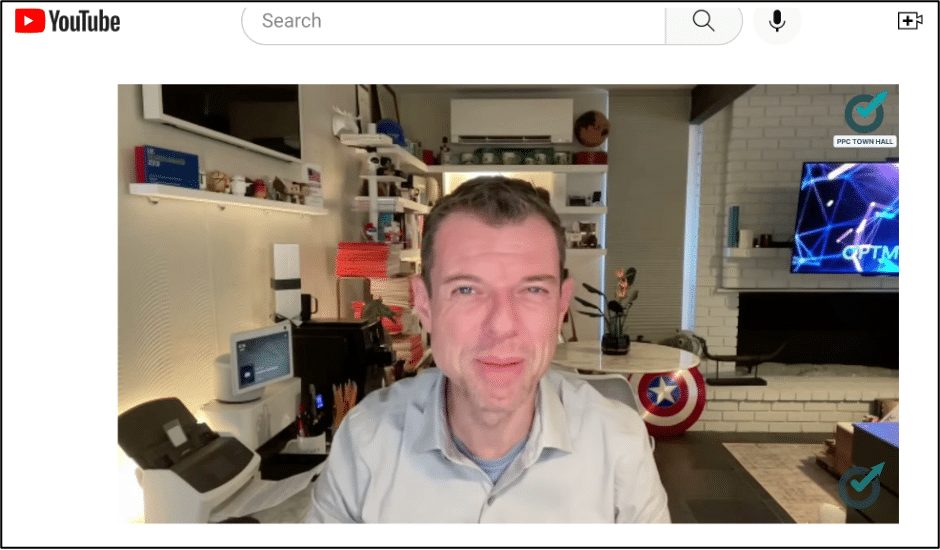Google’s Performance Max (AKA pMax, PMAX, Pmax, P-Max, etc.) has received mixed reviews from marketers of various stripes. One thing’s for sure, any one opinion of Performance Max’s efficacy may not tell the whole (or even part of the) story.
There are a ton of questions in the wild ranging from best practices, image specs and negative keywords to asset requirements, asset groups and pMax vs Smart Shopping ads.
AIMCLEAR gathered opinions from marketers (of various stripes) on real-life pMax performance over the last 90 days and aggregated resources for this post. The big question remains. Does the “P” stand for perfect, putrid, polished, permanent or pee?
What follows is segmented input from blogs in Google News, LinkedIn posts and quotes from Very Smart Marketers, as well as a few other resources.
Blogs in Google News regarding Google’s Performance Max
Performance Max transition: Key trends for Google advertisers
Search Engine Land takes aim at Performance Max campaigns in the field so far, and what the future may bring for advertising as the market closes out the year.
Mark Ballard Nov. 2022
Meet Performance Max, The Blackest Black Box Of All Google Ad Products
Ad Exchanger gives a high level view of how Performance Max works, questions whether it has the makings of antitrust action and highlights that, while marketers like the performance aspect, they don’t like lack of control and transparency.
James Hercher, Dec. 2022
In another review, Google Ads updates in 2022: The good, the bad, the jury’s still out, Search Engine Land laments that pMax has lowered the performance marketing barriers to entry while at the same time decreasing the expert advertisers’ tool box.
Although Social Media Examiner typically focuses on social platform side of performance marketing, in Google Performance Max: What Marketers Need to Know, the outlet shares how Performance Max makes it easier to add Google to a wholistic digital marketing approach.
Michael Stelzner, Nov. 2022
LinkedIn Conversations surrounding pMax Experiences
Marketers in droves have also taken to LinkedIn to share insights, frustrations and praise for what could be considered Google’s most controversial product of 2022.
Tony Zara, Founder of Iron Pully caught our attention with this cynical and likely accurate description of Pmax as Google’s play to monetize remnant inventory. Tony asserts, “The algorithm is designed to make everything broader than an advertiser would intend. This covers a greater span of Google inventory and makes it more difficult to own any specific search query. It’s more profitable for Google to force an advertiser to bid on more terms than it is to auction off the best terms to the highest bidders.” Check out the thread for some buried treasure.
Kirk Williams, host of PPC Ponderings Podcast, questions the altruism of Performance Max best practices in this post. In his corresponding article, What If Some Performance Max Best Practices Are Actually Harmful?, Williams wrestles with, among other things, how marketers are supposed to figure out where pMax fits into overall marketing goals when the only reporting shared is opaque at best.
Still others, like Vice President of Marketing for Western Botanicals, Deven Simmons, laud the product for ease of use while increasing ROAS. It stands to mention, however, that the “tangled mess of split-testing and manual bidding” is where expert digital marketers are able to derive competitive advantages and uncover opportunities.
Meanwhile, although admittedly controversial, Google confidently calls early Q4 victories by way of Pmax’s boss moves. (So far, it stands to be clear that Performance Max is a boss. Whether this boss is a good one, or a bad one, is up for debate):
Echoes of Performance Max aren’t limited to the blogosphere and LinkedIn. They can be heard across varied platforms, meeting rooms and among our friends.
This Town Hall Youtube replay from our pal, colleague and Founder of Optmyzr, Frederick Vallaeys, digs deep into pMax scripts, audiences and campaign structures with in detail. Fred’s Town Hall’s in general are worth a watch and this video is pMax gold.
Additional pMax Insights from Smart Marketers & Google’s Voice
Adam Proehl, Founder, Nordic Click
“With Performance Max in everyday campaign use, you CAN scale up the volume of conversions, however there’s a big BUT attached to that statement. For Ecommerce campaigns that have always been easy pickings (brand, product focus, sales promotion), results we’ve seen have generally performed well.
By that I mean they’ve at least performed as well as campaigns where much more manual control is in place. However, lead gen campaigns (B2B in particular) have presented challenges. In cases where the bid strategy would be “Maximize Conversions,” we’ve seen way too much spam/bot/general crappy traffic. While Google appears to be rolling out some tools to help negate this (placement exclusions to negate apps, negative keywords), there’s still a lot more on our wish list around Assets, Asset Groups, and Audience Signals.
Aside from performance challenges in specific types of accounts, the biggest complaint from my team is the lack of optimization control and insights in a pMax campaign compared to other campaign types. We (like every agency) are responsible stewards of our client’s budget so when a campaign underperforms, they (rightly) look to us, and the lack of insights doesn’t help.
Google’s Performance Max (AKA pMax, Pmax, PMAX, P-Max, etc.) is a mixed bag in anyone’s estimation. Clearly, lots of testing need be done and any single perspective as to best Performance Max’s practices likely won’t give up everything a marketer may need to know.
One of my team members told me this morning that pMax is kicking ass for him for a small client (small chain of pediatric dentists in MN). Plenty of lead conversions (as many as they can handle, anyway) and no complaints about the quality (unlike some of our Enterprise clients) We have plenty of not-so-great stories about it, so I thought it also fair to pass along one that shows it being effective.”
Of course, this round-up wouldn’t be complete without insights from the source itself. When it comes to Performance Max best practices, Google espouses the importance of audience signals and creative, among other things. Meanwhile, Google Ads Product Liaison, Ginny Marvin, keeps followers updated of new pMax features, like the addition of dayparting, ads scheduling and an increased number of headline options. (However, still no sign of intentions to add detailed insights regarding placements or individual creative performance).
So as Google appears committed to improving the product, fellow marketers are creating and sharing hacks like custom scripts and checklists. Mike Rhodes, for example, created a script that helps marketers generate reports that provide asset group level insights alongside channel spend insights. Similarly, Cory Lindholm of Ads By Cory created this Performance Max checklist ecommerce account managers will likely find helpful.
Marty Weintraub, Founder, AIMCLEAR®
“Google has been trying to do away with transparency in ad buys for over 10 years. pMax is the latest and most contemptuous play for Google to remove power from the hands of marketers- even whilst we spend millions over millions throwing shit at the wall. While some marketers have seen success with pMax, progress has come at the expense of serious elbow grease, experimentation, trial and learnings.
One thing’s for sure, Google’s not supportive of marketers having tools to buy granular creative testing performance data anymore. Lack of transparency is a serious buzzkill. There is some promise, mostly for Google.”
Timothy Halloran, Director of Integrated Marketing Strategy, AIMCLEAR®
“It’s too early to tell if pMax will ever get to the point that Facebook’s Lookalikes did back in 2016 where it changed the game for a lot of paid social marketers that were leery of relying too heavily on automation. In time, we noticed that lookalike campaigns [in Facebook] began outperforming standard targeting and we started using them more often, especially in prospecting campaigns. Looking at about $1.2 million in ad spend over the past 8 months and comparing it to standard shopping campaigns, pMax almost exclusively underperforms by a factor of 2. There have been a few tests we’ve run where pMax was able to keep up and ROAS evened out in time, but those few were the exception. In most cases, pMax performed worse than Standard Shopping and Smart Shopping across the board. That’s not to say it will always be worse, I have hope that it will continue to improve the longer it’s in use, but I’ve been unimpressed so far.
The main issue with pMax, at least for me, is the heavy-handed way that Google goes about implementing some of their half-baked features. They force things over before the industry has had time to test and QA it. Because of that, the reception has been lukewarm at best. If Google focused more on their advertiser’s frustrations or individual use cases and improved the product based off that feedback, we’d be more inclined to adopt these changes instead of bristling against them. It’s clear to me that Google Ads improvements are pushed by engineering and very little priority is given to usability. They know we’re forced to adopt the changes they make, and they don’t seem to mind ticking off their advertisers in the process.”
Amber Deedler, Senior Integrated Ad Operations Manager @AIMCLEAR
“pMax has been a mystery box. The lack of insight into where ads are showing is hard to grasp. What really resonates as a concern is that you can’t see where conversions are occurring. This gives a very basic level of reporting as impressions are the only metric Google allows you to see.
Even Google reps don’t give solid recommendations for improvements. Here’s a good one that was recommended by a Google rep… switching to tROAS. Testing tROAS on pMax campaigns was a disaster. Even before switching from tCPA to tROAS, costs increased within pMax campaigns. With very little detail into the “Whys”…it’s hard to make improvements. Advertisers are at the mercy of Google and Google is out to make more revenue without the client’s goals in mind. With all of this to ponder about, many advertisers have been testing standard shopping campaigns once again to see if improvements can be made.”
Google Performance Max: The Evolution Continues
Preliminary indications are in, but the jury’s still out on Google’s Performance (AKA pMax, Pmax, PMAX, P-Max, etc.). Reviews of the product are checkered, while many questions remain as to the meaning of pMax best practices and what results marketers may reasonably expect. We hope this article has raised some awareness and offered perspective. Safe travels in your personal pMax adventure.














